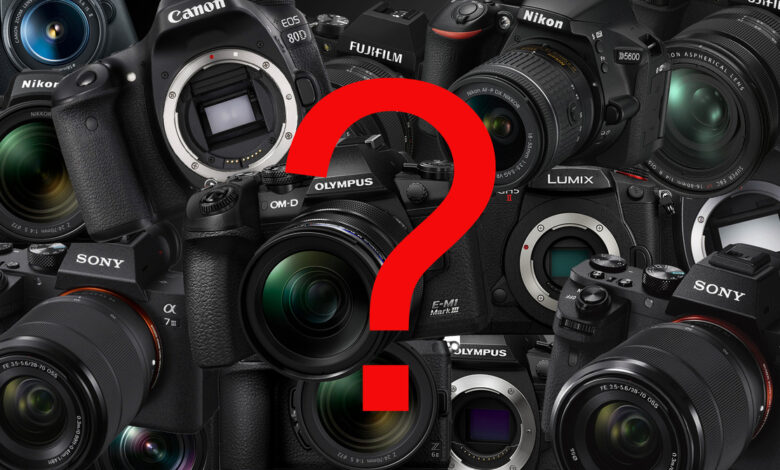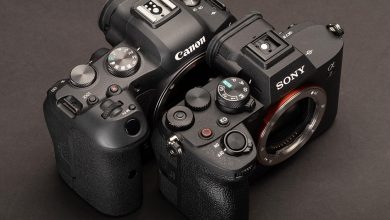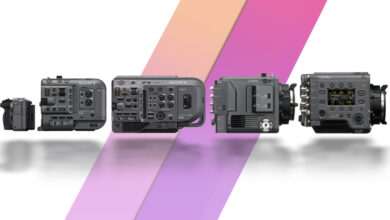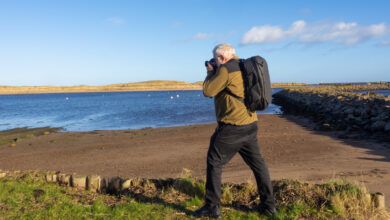Priceless features you should look for when buying a camera

Most cameras are similar in many ways, but they also have unique features that other models don’t have. Choosing the wrong camera can be an expensive mistake. Here are things to consider before spending your hard earned money.
Over the past few months, I have fed images from dozens of cameras through various raw development software for software testing. All the major brands produce cameras that can produce great images. While I have published images from modern professional cameras for those articles, I have also tried raw files from mid-range and consumer cameras as well as some older models. No camera produces poor quality photos, and neither does any software; they are all good.
The sensor technology is so that all cameras from well-known brands – Canon, Fujifilm, Leica, Nikon, OM System (Olympus), Panasonic Lumix, Pentax and Sony – can produce beautiful photos at a premium level. professional level. You can put any end-consumer camera in the hands of seasoned professionals and they’ll be able to take great pictures. So how can we choose between them? After all, most photographers widely recognize the old megapixel argument as redundant. There are exceptions, but for the majority, 18-20 megapixels is more than enough, and a larger number just means a larger file size. What’s more, if you go back in time, top professional cameras come in less than 10 megapixels and photographers still produce big prints.
However, some cameras are more versatile than others. Some features allow you to get photos that others don’t, while others make it much easier to get those results. So, here are the things you should look for in a camera that makes your photography more enjoyable and gives you a higher success rate.
1. Articulated rear screen
One of the secrets to taking great photos is to place your camera where the human eye can’t see it. This could mean shooting with a camera just a few inches off the ground. The tilting or fully articulating rear monitor allows you to keep the camera at floor level while still composing the shot. Otherwise, it means crawling on your knees or lying on the ground. Likewise, it is necessary to hold the camera overhead and it is difficult to see what you are shooting if the screen is not rotated.
I like a fully articulated display that swivels sideways, swings up and down, and rotates 270 degrees. This is because I also use my camera as a webcam when playing videos, allowing me to view the camera controls from the front. I also used to push my camera between the branches of a shrub or between the railings of a fence to capture something that would otherwise be inaccessible.
2. Two control dials
I mentioned this in a previous post. Also known as command dials, or just front and rear dials, they give you a lot of control over how the camera exposes images. The front dial is rotated with your index finger and the back with your thumb. To understand the importance of this, one must consider the main alternative: press the +/- button to toggle between the main exposure adjustments, in most cases, aperture and shutter speed. . The node method is clumsy and slow in comparison.
The dual dials let you choose the best possible exposure settings quickly. They’re also the fastest way to scroll through and zoom in on photos you’ve taken.
3. Large, clear viewfinder
There’s nothing worse than squinting through a small viewfinder and trying to compose a shot. I’ve heard the excuse for small viewfinders is that you only need them for focus and autofocus is fine; one does not need to see what one is photographing. It’s a drug. A large, bright viewfinder is needed to see depth of field, what’s in the background and around the edges of the frame.
Also, make sure that the camera has a diopter adjustment function that changes the focus of the viewfinder to match your eyes.
4. Viewfinder provides 100% view of the scene
One of my clients went to a course and I was explaining the basics of composition. Although she tried not to, she was continuously capturing the landscape with the horizon running through the center of the frame. I tried her camera and got the same results. The viewfinder is cropped off the bottom of the scene, making it impossible to compose the shot correctly. Having a viewfinder that displays 100% of the scene is essential for in-camera composition.
5. Lots of meeting points
My first DSLR had three focus points; my latest mirrorless camera has 1,053. Most consumer cameras fall somewhere in between those cameras. I recommend looking for a camera with no less than 100 focus points. If it’s less than that, you’ll have to focus and recompose your shot, or you may not fully focus on the subject,
6. Silent mode
Many cameras have horribly short lifespans. The camera is not alone in this. Planned obsolescence occurs in everything: light bulbs, printers, smartphones, and clothing are all designed to fail in a much shorter amount of time than they are capable of. A few years ago, I had to liquidate a 10 year old car because the brake discs were worn out and were no longer manufactured. The camera is the same. Most have poor quality mechanical shutters that fail, sometimes as soon as 80,000 runs.
Always check the life of the shutters; that’s a good indicator of the overall quality of the camera. If you use silent mode on the camera, when there is no movement inside the camera body, you can significantly extend the life of the camera. There are times when there are photos where silent mode is not the best choice due to an effect called “rolling shutter”.
7. In-body image stabilization
Image stabilization is a great technology that allows you to hold your camera for longer shutter speeds than before. Its integration into the camera means that you can buy smaller and cheaper lenses and still take advantage of that convenience.
8. Comfortable to carry and use
Ergonomics is the study of human efficiency in the work environment. If a camera is right for the user, they will find it easier to use. Many years ago, I suffered a neck injury from wearing a heavy camera and lens with a neck strap. Therefore, I now use shoulder straps and a much lighter system.
There used to be a view that a good camera had to be a big and heavy DSLR. This is strange because most technology has oriented towards miniaturization long before DSLR cameras appeared. The behemoths that dominate the professional camera market are much larger than their cinematic predecessors.
It’s a very personal thing, the fit between the photographer and the camera. My camera feels comfortable in my hand, the whole system isn’t too heavy to carry, and all the buttons and wheels are in the right place for my fingers. Additionally, the buttons on the camera are programmable, meaning I can access the necessary settings without scrolling through menus. I tried some cameras that didn’t work for me and others up close, but nothing got through. But that doesn’t mean it has to fit in your hand. That’s why I always tell people looking to buy cameras to go to the store and try them out.
9. Lens
Low-end cameras often come with “kit” zoom lenses. Most, but not all, of these are better than before. However, it is worth considering whether that lens will meet your needs. The 18-55mm f/3.5-5.6 lens is neither fast nor particularly wide, and can’t pull distant objects close. A landscape photographer might opt for something sharper and wider, while a novice wildlife photographer might be better off buying a longer lens. Most 75-300mm lenses are affordable and sharp at around 200mm. Similarly, if your hobby is portrait photography, then an f/1.8 prime lens might serve you better than a kit zoom lens.
10. Weather and dust sealing
Nearly 30 years ago, I helped lead a youth expedition to Namibia. There was too much dust flying in everywhere. Although not covered with dust, my SLR was the only one that was still active at the end of the visit as all compact cameras with motorized zoom and film roll mechanisms were exhausted. . A few years later, I bought a Nikon bridge camera. It died on the beach while I was taking pictures in the sandstorm. Now I live in the North of England, and it rains here. For me, sealing against weather and dust is essential.
It may not be an important feature if you are only shooting indoors. However, weather and dust resistance becomes essential as soon as you start taking a little risk with your camera.
Other considerations when choosing a camera
Depending on your needs, other things may convince you to buy or not buy a particular camera.
If you plan to shoot landscapes, a high frame rate is not as important to you as it is to a wildlife photographer. Meanwhile, a wildlife photographer might want 50 or 120 frames a second. Or someone who enjoys capturing birds, lightning, or water drops might enjoy the continuous shutter half-press feature that will buffer up to 20 images that are only recorded to the memory card when you press the shutter button. As a result, your reaction time is out of the equation and you don’t miss any action.
Most camera manufacturers publish the number of shots they will take after a single battery charge. My camera is rated for 520 photos in standard mode (no fast sleep). I get twice as many times as that. Furthermore, I can plug an external power bank into the USB port and charge the battery or run the camera directly from it. I thought that would be important to me and bought a power bank. But I haven’t had to use it so far because the battery life is so good. I changed the battery once for the last wedding I photographed and I shot from 9am to 9pm.
If you’re not interested in raw image development, your camera’s JPEG image quality can be very important to you, and some brands produce better JPEGs than others. Some models have artistic filters that emulate different styles such as sepia, bleach bypass, cross-processing, or polarizing film. Others export images that reproduce film types.
I usually shoot at night, so I find the ability to connect the camera via Wi-Fi to my smartphone a benefit, as I can take pictures without touching the shutter-release button.
Finally, and this is a controversial issue, if you take artistic photos, you should surround yourself with beautiful objects. When digital cameras first came out, one big complaint was how lifeless they looked compared to their predecessors. Apple users often cite the attractive design of their products. Would people drive Ferraris if they looked like Citroen 2CVs? Sure is not. Should we consider the same thing with our cameras? A stylish and attractive camera will inspire more than a shapeless piece of plastic.
Are there any specific features you are looking for in a camera? Have you ever bought a camera and found it lacking in some aspect? Is there a function your camera has that you can’t live without? It would be great to hear about them in the comments.




